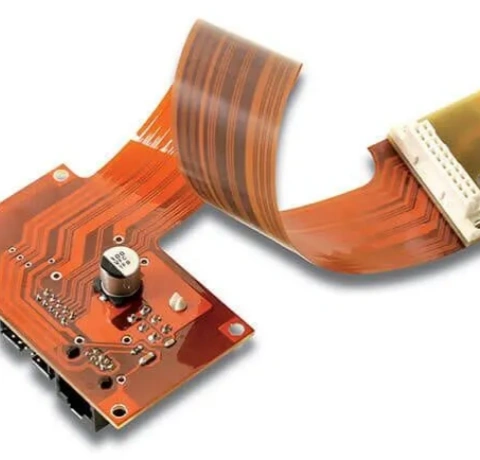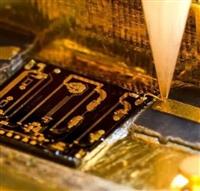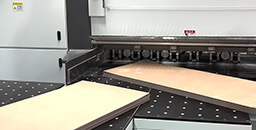| product type |
1 |
Multilayer PCB Layers |
3L≤Layers≤16L |
18L≤Layers≤24L |
≥24L |
|
|
| 2 |
Blind and Buried Vias |
HDI(1+1+....+N+......+1+1) |
Anylayer HDI |
HDI(2+...+N...+2) |
|
If meet the requirements of 2, 6, and 21 at the same time, it is classified as a high requirement product (thickness to diameter ratio, copper thickness of hole) |
| 3 |
Surface Coating |
HASL(+gold finger),immersion gold, Immersion Gold +gold fingers with hard gold,OSP (+gold finger with hard gold), Immersion Tin (+gold finger with hard gold) (Not two different surface finish),Immersion Tin |
Local immersion gold (long or short gold fingers, segmented gold finger craft) |
Exceed this range require unconventional production processes |
|
Partial immersion gold, thickness of gold or nickel reference to the thickness of the coating |
| 4 |
Board Material |
FR-4;aluminum,Rogers4 series + FR-4 mixed(The Prepreg is ShengYi brand and ROGERS4403 series);CEM-3、LianMao IT158/IT180A |
Pure ROGERS4 series multi-layer board (Prepreg is 4450F),PTFE、aluminum+FR4、PTFE+FR4 |
Exceed this range require unconventional production processes |
Pure PTFE multi-layer board |
Pure PTFE can’t be made because the lamination temperature isn’t up to standard,Can‘t laminate Rogers copper foil directly |
| Drills |
5 |
Drill diameter |
Nc drill |
0.20mm≤Drill diameter≤6.5mm More than 6.0mm using CNC milling
hole diameter 0.2mm: maximum board thickness 1.6mm
hole diameter diameter 0.25mm:maximum board thickness 2.0mm,
hole diameter 0.3mm≤Ф≤0.35mm, maximum board thickness 3.2 mm,
hole diameter 0.4mm≤Ф≤0.55mm, maximum board thickness 4.8 mm,
hole diameter>0.55mm maximum board thickness 6.4 mm |
6.5mm or more ±0.1mm ≤ hole diameter tolerance (using CNC milling for 6.5mm or more) |
The drill diameter more than 6.0mm, the hole diameter tolerance less than ±0.1mm. If exceed this range require unconventional production processes |
|
Drill diameter below 0.2mm, and the aspect ratio≥10, which is medium difficulty |
| 6 |
Thickness to diameter ratio |
Thickness to diameter ratio≤8 |
8
10
| Thickness to diameter ratio greater than 12 when the aperture cannot be compensated |
If need to meet the requirement of 2, 6, and 21, it will be treat as high requirement product. |
| |
| 7 |
countersink |
hole diameter |
3.0mm≤hole diameter≤6.5mm |
|
Unconventional production beyond this range |
|
Countersink depth tolerance is controlled 0.15mm |
| Angle |
90° |
|
Unconventional production beyond this range |
|
| 8 |
Hole position tolerances |
±0.075mm |
|
±0.05mm |
<+/-0.05mm |
|
| 9 |
hole diameter tolerance |
PTH |
±0.075mm or no customer requirements |
±0.05≤ hole diameter tolerance <±0.75mm |
<±0.05mm |
<+/-0.05mm |
Metallized hole diameter tolerance of 6.0mm or more refers to the requirement of serial number 5 |
| NPTH |
≥±0.075mm |
|
<±0.05mm |
<+/-0.025mm |
| Special hole |
pressfit |
≤±0.05 |
\ |
\ |
|
|
| non-plated Countersink/Counterbore holes(NPTH) |
hole diameter <10mm:tolerance ±0.15mm,hole diameter ≥10mm:tolerance ± 0.20mm |
\ |
\ |
|
|
| non-plated Countersink/Counterbore holes(NPTH) |
hole diameter <10mm:tolerance ±0.2mm
hole diameter ≥10mm:tolerance+0.3mm |
\ |
\ |
|
|
| 10 |
Hole to hole spacing |
component hole |
≥16MIL |
14≤Hole to hole spacing≤16 |
13≤Hole to hole spacing≤14 |
<13mil |
|
| via(≤0.45mm) |
≥11MIL |
|
|
|
|
| 11 |
Slot (Cut-out) |
Slot width |
Plated slot ≥0.5mm
Non-plated slot ≥0.8mm |
\ |
\ |
|
More than 1.0mm, can be slot by machine |
| Length to width ratio of slot |
Length to width≥2 |
Length to width<2 |
|
|
|
| 12 |
Castellated Holes |
Castellated Holes diameter |
≥0.5mm |
0.5mm>diameter≥0.4mm |
\ |
|
|
| Castellated Holes spacing (edge to edge) |
≥0.3mm |
0.3mm>diameters≥0.2mm |
\ |
|
|
|
13 |
Minimum isolation ring of Inner layer,
The distance between minimum hole in Inner layer and circuit (before compensation) |
4L |
≥7MIL |
6MIL≤isolation ring, distance<7MIL |
5MIL≤isolation ring, distance<6MIL |
|
If the size of one side is greater than 600MM, the inner hole to line and the hole to copper spacing must be greater than or equal to 15mil. If less than 15mil, it must be treated as unconventional review. The conventional process of 10 layers or more need to be incremented by 1 mil for each additional 2 layers. Change the isolation ring to 12mil or more as much as possible |
|
6L |
≥8MIL |
6.5MIL≤isolation ring, distance<8MIL |
6MIL≤isolation ring, distance<6.5MIL |
|
|
8L |
≥9MIL |
7MIL≤isolation ring, distance<9MIL |
6MIL≤isolation ring, distance<7MIL |
|
|
≥10L |
≥10MIL |
8MIL≤isolation ring, distance<10MIL<9MIL |
7MIL≤isolation ring, distance<8MIL |
|
| image transfer |
14 |
The min width/spacing of inner layer (before compensation) |
copper thickness 18um |
≥4/4 mil |
≥4/3.5 mil |
|
<3.5/3 mil |
width/spacing |
| copper thickness 35um |
≥4/5 mil |
≥4/4 mil |
|
<3.5/4 mil |
width/spacing |
| copper thickness 70um |
≥6/8mil |
≥6/7mil |
|
<5/6 mil |
width/spacing |
| copper thickness 105um |
≥8/11 mil |
≥8/10 mil |
|
<6/9 mil |
width/spacing |
| 15 |
The min width/spacing of outer layer (before compensation) |
copper thickness 18um |
≥4/5 mil |
≥4/4 mil or parts 3.5/3.5mil |
|
<3.5/3.5 mil |
Local 3.5/3.5mil, only the distance from the GBA chip area line to the PAD |
| copper thickness 35um |
≥5/6 mil |
≥5/5 mil |
|
<4/4 mil |
|
| copper thickness 70um |
≥7/8mil |
≥6/7mil |
|
<5/6 mil |
|
| copper thickness 105um |
≥10/12 mil |
≥8/10 mil |
|
<6/9 mil |
|
| 16 |
grid trace width/spacing |
copper thickness 18um |
≥7/9 mil |
≥6/8 mil |
|
<6/7 mil |
|
| copper thickness 35um |
≥9/11 mil |
≥8/10 mil |
|
<8/9 mil |
|
| copper thickness 70um |
≥11/13mil |
≥10/12mil |
|
<10/11 mil |
|
| copper thickness 105um |
≥13/15 mil |
≥12/14 mil |
|
<12/13 mil |
|
| 17 |
Minimum weld ring (outer layer) |
copper thickness 18um |
via hole |
≥5mil |
≥4mil |
<3 mil |
|
|
| component hole |
≥8mil |
≥6mil |
<6 mil |
|
|
| copper thickness 35um |
via hole |
≥5mil |
≥4mil |
<3 mil |
|
|
| component hole |
≥10mil |
≥8mil |
<8 mil |
|
|
| copper thickness 70um |
via hole |
≥7mil |
≥6mil |
<5 mil |
|
|
| component hole |
≥12mil |
≥10mil |
<10 mil |
|
|
| copper thickness 105um |
via hole |
≥8mil |
≥6mil |
<6 mil |
|
|
| component hole |
≥14mil |
≥12mil |
<12 mil |
|
|
| 18 |
width tolerance |
|
width tolerance:≥±20% |
±10%≤ width tolerance:<±20% |
<±10% |
|
spacing must meet the requirements of 11 and 12, lf width is greater than 15mil, controlled by ±2.5mil |
| BGA pad diameter |
hot air leveling (original) |
≥12MIL |
≥10MIL |
|
<8mil |
|
| immersion gold (original) |
diameter≥11mil |
8.0mil≤diameter<11.0mil |
|
<6mil |
|
| 19 |
Line to board edge distance |
CNC milling |
0.25mm |
0.20mm |
<0.20mm |
|
|
| SMT width |
|
≥12mil |
≥9mil |
<9mil以下 |
|
<7mil,except the binding board |
| Metal plating |
20 |
Plating Thickness(µin) |
Electroless Nickel-Immersion Gold,ENIG |
Nickel thickness |
100-150 µin |
200 µin |
|
|
|
| gold thickness |
1-8 µin |
|
|
>8 µin |
|
| Full board gold plating |
Nickel thickness |
100-150 µin |
|
200-500 µin |
|
Order center check the final price |
| gold thickness |
1-10 µin |
10-50 µin |
|
>50 µin |
| gold finger |
Nickel thickness |
120-150 µin |
|
200-400 µin |
|
| gold thickness |
1-30 µin |
30-50 µin |
|
>50 µin |
| 21 |
Hole copper thickness (µm) |
Through hole |
18-25 µm |
30-50 µm |
>50 µm |
|
If 2,6,19 is required to exist at the same time, it will be treated as high requirement. The thickness of the copper is 25-50UM, and the thickness of the copper is required to be 2-3OZ generally. |
| Blind hole (mechanical hole) |
18-25 µm |
30-50 µm |
>50 µm |
| Buried hole |
15-25 µm |
30-50 µm |
>50 µm |
| 22 |
Bottom copper thickness |
Inner and outer copper thickness (OZ) |
0.5-4 |
4-6 |
|
>6 |
|
| solder mask |
23 |
solder mask |
green solder mask opening(mil) |
≥2mil |
1.5 |
1 |
|
1mil is only concentrated in the BGA area. If the window can be enlarged, increase it as much as possible, but the maximum is 3mil |
| green solder mask Bridge(mil) |
copper thicknesss<2OZ |
4(spacing between ICs is 8 mil, green oil),variegated or black oil≥4.5mil |
3-4(spacing between ICs is 7-8 mil, green oil),variegated or black oil≥4mil |
|
|
|
| copper thicknesss≥2OZ |
5 |
4 |
|
|
|
| Plug Hole diameter |
0.20mm≤hole diameter≤0.40mm,plug hole fullness 70% |
0.4mm< hole diameter ≤0.70mm |
fullness 100% |
|
|
| Plug Hole board thickness |
0.40mm≤board thickness≤2.4mm |
>2.4MM |
|
|
|
| 24 |
solder mask |
solder mask color |
Green, matt green, blue, red, black, matte black, white, yellow |
\ |
\ |
|
Special colors need to be purchased or deployed in advance |
| silkscreen |
25 |
Etched silkscreen (finished copper thickness) |
Copper thickness 18um |
word width/word height |
8MIL/40MIL |
7MIL/35MIL |
|
|
|
| Copper thickness 35um |
word width/word height |
9MIL/40MIL |
8MIL/35MIL |
|
|
|
| Copper thickness 75um |
word width/word height |
12MIL/60MIL |
10MIL/50MIL |
|
|
|
| Copper thickness 105um |
word width/word height |
16MIL/60MIL |
14MIL/50MIL |
|
|
|
| outline |
26 |
Maximum board thickness |
Double PCB |
3.2MM |
4.5MM |
>4.5MM |
|
calculated by 4 layers if the thickness more than 3mm |
| Multilayer layer board |
3.2MM |
4.5MM |
>4.5MM |
|
|
| 27 |
Minimum board thickness (single and double panel refers to substrate thickness) |
Single or Double side PCB (pcb prototype) |
≥0.3mm |
0.25mm |
|
|
|
| 4L |
≥0.60mm |
0.40mm |
<0.40mm |
|
|
| 6L |
≥0.9mm |
0.70mm |
<0.70mm |
|
|
| 8L |
≥1.20mm |
1.00mm |
<1.00mm |
|
|
| 10L |
≥1.40mm |
1.20mm |
<1.20mm |
|
|
| 12L |
≥1.70mm |
1.50mm |
<1.50mm |
|
|
| 14L |
≥2.00mm |
1.80mm |
<1.80mm |
|
|
| 28 |
thickness (T) tolerance MM (multilayer layer pcb) |
T≤1.0 |
±0.10 |
|
Need to review if less than the tolerance |
|
If the tolerance is unilateral tolerance, the tolerance shall be double tolerance value, such as: 1.8mm requires positive tolerance, the tolerance shall be 0-0.36mm |
1.0
| ±0.13 |
|
|
1.6
| ±0.18 |
|
|
2.5
| ±0.23 |
|
|
| T≥3.2 |
±8% |
|
| 29 |
Maximum finished board size |
Single and double side PCB |
508×610mm |
Beyond this range needs to be reviewed |
|
|
| Multilayer Layer PCB |
508×600mm |
| 30 |
Minimum finished pcb size |
|
≥20mm |
10mm≤Size<20mm |
<10mm |
|
|
| 31 |
Beveling for gold finger |
Bevel angle |
20°30°45°60° |
|
<20°Or>60° |
|
|
| Bevel angle tolerance |
>±5° |
±5° |
<±5° |
|
|
| Bevel depth tolerance |
tolerance≥±0.15mm |
±0.15mm< Tolerance ≤ ±0.1mm |
tolerance<±0.10mm |
|
|
| 32 |
Shape tolerance |
|
tolerance≥±0.15mm |
±0.10mm≤tolerance<±0.15mm |
|
Tolerance<±0.10mm or more than two form tolerance control |
|
| 33 |
V-CUT |
Angle |
20°30°45°60° |
|
|
|
|
| The Maximum number of V-CUT |
In 20 times |
In 30 times |
In 40 times |
|
|
| Width of the shape |
80MM< width <560MM |
60MM< width <80MM |
width <60MM |
|
|
| board thickness |
0.6MM≦thickness≦2.4MM |
0.5MM≦thickness<0.6MM |
thickness<0.5MM or thickness>2.4MM |
|
below 0.5mm is single-sided V-CUT |
| Remaining thickness |
≥0.25MM |
|
|
<0.25MM |
|
| V-CUT |
Conventional V-CUTT、V-CUT: Skip V-CUT |
\ |
\ |
|
|
| others |
34 |
panel size |
The minimum panel size |
≥100*120mm |
\ |
<100*120mm |
|
The thickness of the finished board is less than 0.4MM, the panel size can’t exceed 14inch, and the maximum size of the HASL PCB can’t exceed 24inch |
| the Maximum panel size |
≤20*24 inch |
\ |
Need to review if beyond range |
|
| 35 |
impedance control |
Impedance control tolerance |
±10%,50Ω and below:±5Ω |
\ |
<±10%,50Ω and below <±5Ω |
|
|
| bow and twist |
bow and twist tolerance |
bow and twist≤0.75% |
0.5%≤bow and twist≤ 0.75% |
bow and twist<0.5% |
|
asymmetry boards bow and twist tolerance 1.2% |
| 36 |
HASL processing capacity |
component hole diameter |
hole diameter>0.5mm |
0.4mm≤hole diameter≤0.5mm |
|
|
|
| board thickness |
0.5mm≤board thickness≤3.5mm |
0.4mm≤board thickness<0.5mm |
|
|
|
| thickness |
2um≤thickness of Tin≤30um |
\ |
\ |
|
|
| 37 |
Acceptance Criteria |
IPC standard |
IPC2 level standard |
IPC Level 3 standard |
|
|
|




























 Smart Devices: We have large customer base in these industries. Customers choose us to make their PCBs in the prototype and production stage.
Smart Devices: We have large customer base in these industries. Customers choose us to make their PCBs in the prototype and production stage. Medicine: Medicine and biomedical clients occupy a large part of our customers. We have strict quality standard and short lead time and our price is competitive, our customer base in this area is still on the rise.
Medicine: Medicine and biomedical clients occupy a large part of our customers. We have strict quality standard and short lead time and our price is competitive, our customer base in this area is still on the rise. Commercial, industrial and automotive:
Most of our customers are in these industries. Fast response, short delivery time, professional engineering support continuously affordable price help retain and expand customer scale in these industries.
Commercial, industrial and automotive:
Most of our customers are in these industries. Fast response, short delivery time, professional engineering support continuously affordable price help retain and expand customer scale in these industries.
 University, school and amateur:
Students are our future scientists, we support them! Students and amateurs are price sensitive customers, our price guarantees they will rely on us for their PCB needs in terms of price and quality! At the same time, our educational sponsorship program provides free PCBs to university students, please send us the details of your project or competition at service@pcbway.com.
University, school and amateur:
Students are our future scientists, we support them! Students and amateurs are price sensitive customers, our price guarantees they will rely on us for their PCB needs in terms of price and quality! At the same time, our educational sponsorship program provides free PCBs to university students, please send us the details of your project or competition at service@pcbway.com.













































